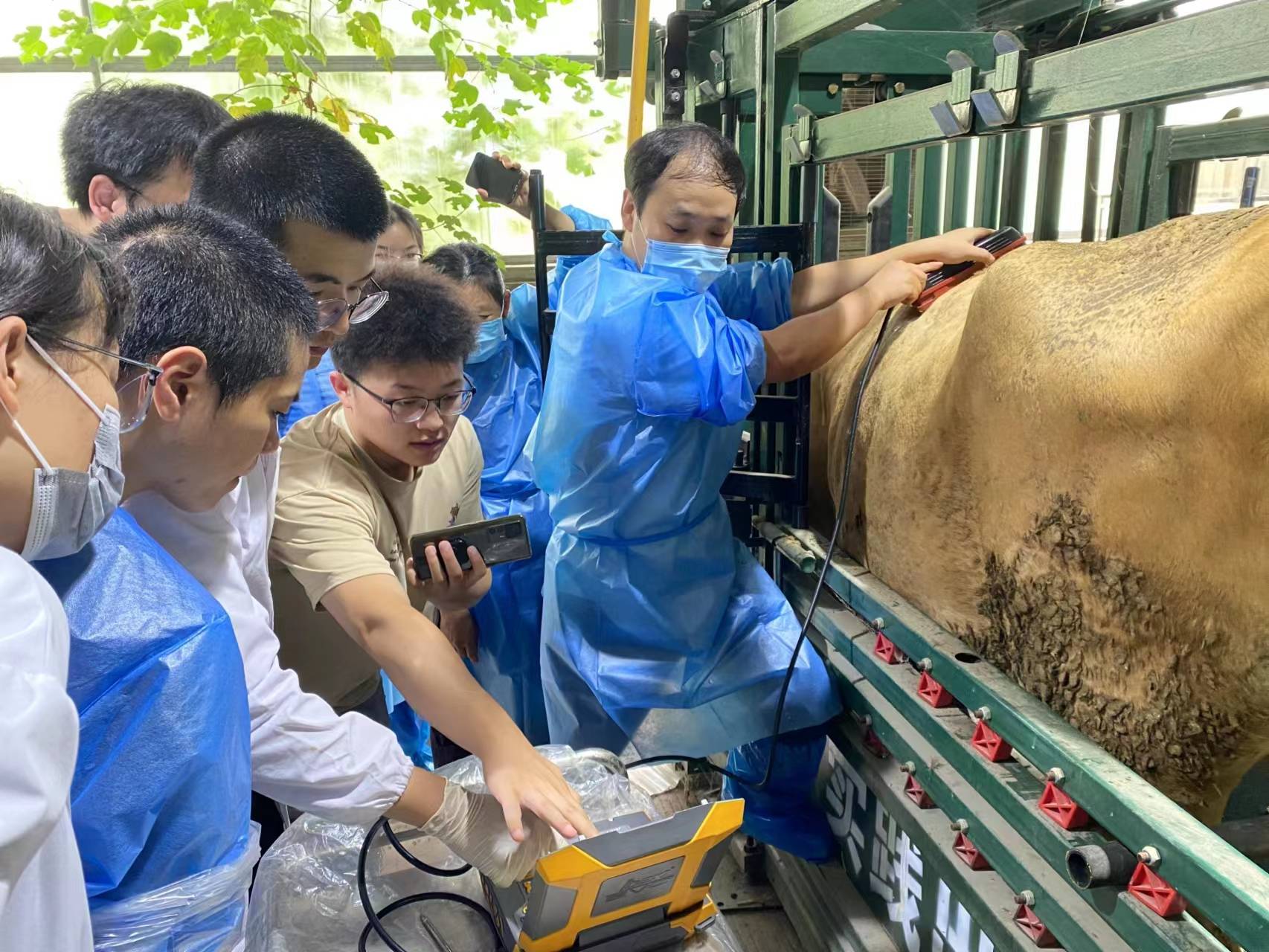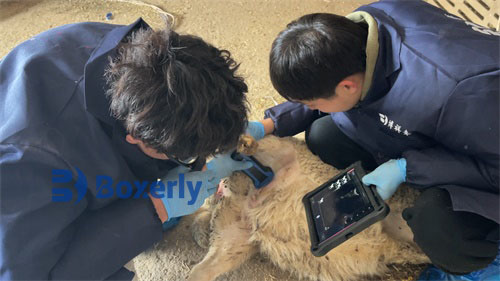At present, in the process of genetic improvement of meat producing livestock, the commonly used method for selecting breeding sheep is to evaluate meat performance based on body size, physique, and weight. However, this method has limitations in that the selection cycle is long, and genetic traits related to meat quality cannot be directly selected, which cannot meet consumers' preference for lean meat consumption. In the breeding process, it is impossible to estimate the breeding value of lean meat percentage by killing male livestock, measuring carcass weight and lean meat percentage. By measuring the eye muscle area using ultrasound in vivo and calculating the correlation between eye muscle area and lean meat, the lean meat percentage of the livestock can be determined without affecting its production. This is beneficial for early in vivo selection and accelerates the breeding process.

Backfat eye muscle image
Compared with the data measured after slaughter, the results of B-ultrasound live measurement of eye muscle area are relatively small because in order to obtain a clear eye muscle image, a certain pressure must be applied to the probe, which will cause pressure on the sheep's dorsal muscle, resulting in a slightly smaller area than the normal value. When measuring the area of the eye muscles after slaughter, the cross-section of the muscles should be slightly larger than the normal value by cutting from the ribs at 12-13 and tracing the contour with sulfuric acid paper. But this difference does not affect the correlation between eye muscle area and lean meat percentage. The difference in eye muscle area between Altay sheep and Xinjiang goats of the same age is significant, which is in line with their respective growth patterns. As a meat sheep breed, Altay grows faster than goats. According to measurements by Zhao Guohua et al., 1 The weight of 5-year-old Kazakh sheep ranges from 37 to 40 kg, while the average weight of Qaidam cashmere goats of the same age is 20 kg. The lean meat percentage of the carcass is not only related to the area of the eye muscles, but also to the thickness of the fat. As the fat thickness of the sheep carcass varies, which part of the body can best represent the fat thickness of the whole body and has the highest correlation coefficient with lean meat percentage is worth studying.
There is a strong positive correlation between the lean meat percentage of the carcass and the eye muscle area of meat sheep, indicating that the lean meat percentage of meat sheep can be estimated using ultrasound in vivo measurement of traits. In breeding practice, ultrasound measurement can be used to assist in the selection of lean meat percentage, thereby achieving the goal of selecting seeds based on individual performance.








